Living life off the grid
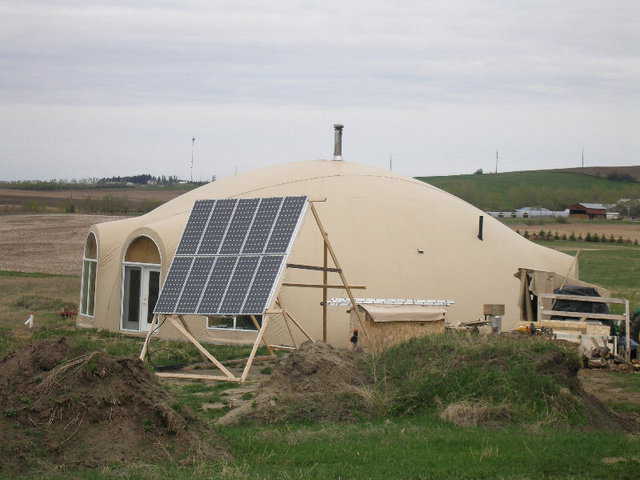
Living off the grid is a dream for some, but for one Canadian couple it’s a reality. Thanks to a Monolithic Dome, they have been living a sustainable life for a decade.

Living off the grid is a dream for some, but for one Canadian couple it’s a reality. Thanks to a Monolithic Dome, they have been living a sustainable life for a decade.
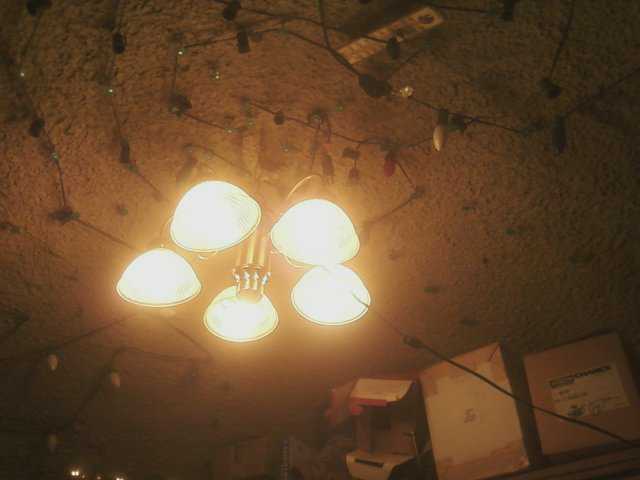
Sometimes people find the Monolithic Dome to be so efficient, they can heat them in creative, non-traditional ways. Monolithic Dome owner, Jerry Cleveland, recently sent us an E-mail about the super energy-efficiency of his Monolithic Dome. He had been heating his Monolithic Dome with Christmas lights which had stopped working, so he substituted a ceiling light with five sockets.

Like many traditional schools, this building has a line of 20 air conditioning units along its back wall. The companion building has another 20 units along its back wall. That’s 40 AC units at just one school! Consider what it costs to install 20 units. How much electrical do those 20 units require? How much copper? How much just plain expense does it take to install and run 20 units?

In 2012 our total energy costs were just under $950! That’s just under the average energy cost per household of $962 for a one-person household in 1997!
To those that are in the designing of buildings and the calculating of energy cost, I suggest you look at the following website: www.energy-design-tools.aud.ucla.edu/heed/.
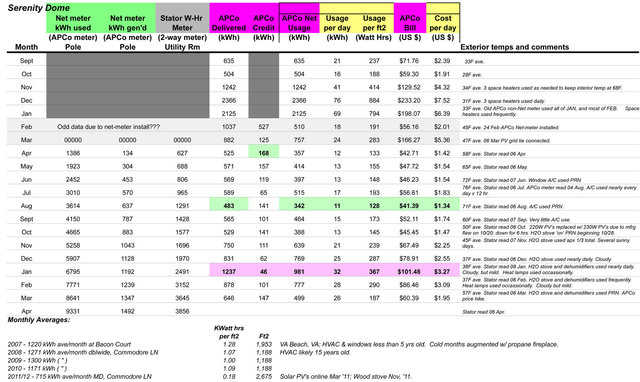
Editor’s Note: In 2010, Maddy and Chris Ecker moved into their Monolithic Dome home in Galax, Virginia. It’s an oblate ellipse built on a two-foot stemwall, with a diameter of 50 feet and a living area of 2675 square feet. The Eckers have carefully documented their dome-home’s performance and share their findings with us.
A home comes in two parts; the first part is the investment. With the investment comes its value as a family domicile, a place of refuge (if it is strong enough to be a refuge), and a place for the family to gather, work, struggle and grow together. The second part of the house is the money pit. That’s the cost of maintenance, fuel, electricity and manpower it takes to maintain and operate a house. The money pit is where you throw hard-earned cash that’s never seen again by you, the homeowner.
Sorry for delay in writing as you as you asked about my heating and cooling costs for my 60’ Dome. You built my dome in 2004. I had interior done by local contractors. Framing was 2×6 with storage floor above garage with TGI beams. My Trane Heat Pump was installed on storage floor by Indian Air. All walls are insulated.
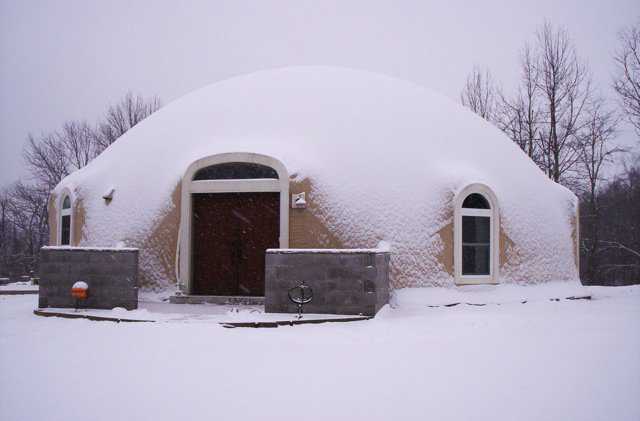
In early 2010 my wife Maddy and I, as owners of a dome under construction, submitted our original “Cold Study” article to Monolithic. Now that we’re living in our furnished dome, we wanted to share more energy consumption data, again concentrating on the colder months in SW Virginia. These data are reported in the attached tables.
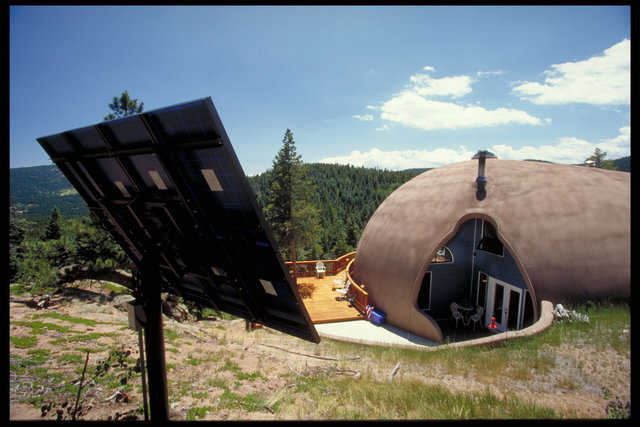
People who live in Monolithic Dome homes usually are willing to think outside the box. So it’s not surprising that dome owners also commonly live “off the grid” or OTG for short. OTG is a term used to refer to homes that are self-sufficient when it comes to their utility services. They might generate their own electricy using wind, solar or other alternative energy sources. They also sometimes provide their own on-site heat.
With hurricane season just around the corner, there’s a renewed focus on the Monolithic Dome’s ability to meet the Federal Emergency Management Agency’s standards for near-absolute protection. Or as one blogger recently put it, people are interested in dome homes partly because they are the “most comfortable storm shelter you could ever live in.” But the article posted on the site, ForcedGreen.com, went on to recount the many other advantages offered by these so-called ”super structures,” and there are many.
The Xanadu Resort in Belize was the first Monolithic Dome resort in Central America and the Caribbean when it opened in 1998. Now it can lay claim to another first. The property recently became the first Green Globe Certified Island Resort in the town of Ambergis Caye, according to The San Pedro Sun.
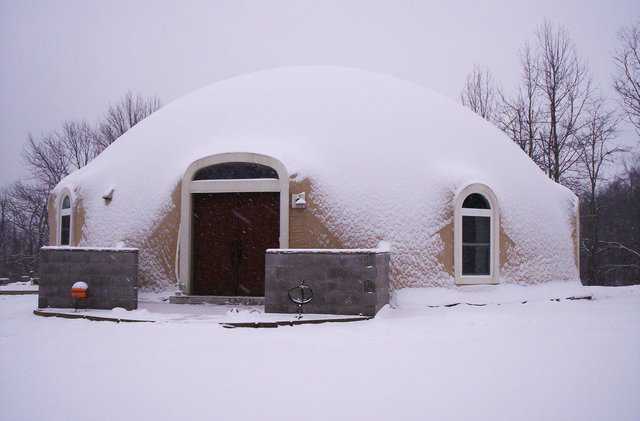
So you’re nested in the mountains and up comes a cold spell. What to do? Maddy and I decided to turn our dome-in-progress into a controlled laboratory with the goal of putting the thermodynamics of thin shell concrete domes to the test.
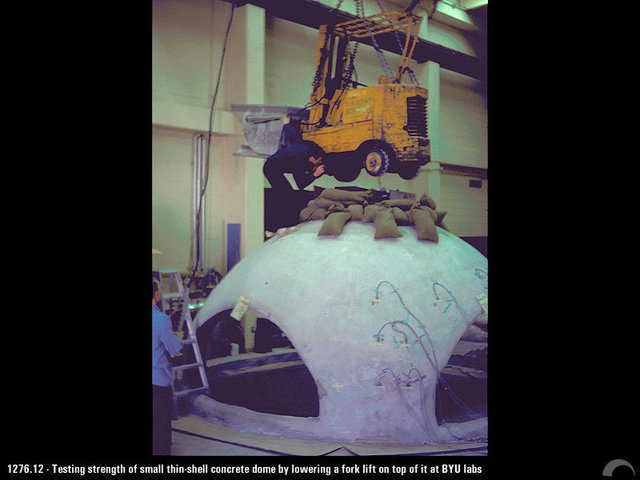
The concrete dome is similar in shape and structure to an egg which has always been a fascination. The egg shows us that a relatively soft and weak material can be used to create a very strong structural shape. A simple demonstration illustrating the strength of an egg was made using a 2′ × 10′ wood plank, supported on one end by a rigid support and on the other end by one hard boiled egg. Four bags of Portland Cement were placed on the plank, at center span, one at a time, for a total of 376 pounds or 188 pounds on one egg. The shell did not crack! Such is the strength of some domes.
People come from all over the nation to see them. They are wonderful. We recently looked at the past year’s savings in utilities in these buildings verses traditional style buildings of the same size.

A heavy wall must have two qualities in order to dampen diurnal changes in the exterior environment and thus keep the internal temperature of a room relatively constant: heat capacity — the ability to store heat, and low heat conductivity — the ability to resist, or to insulate against heat flow.
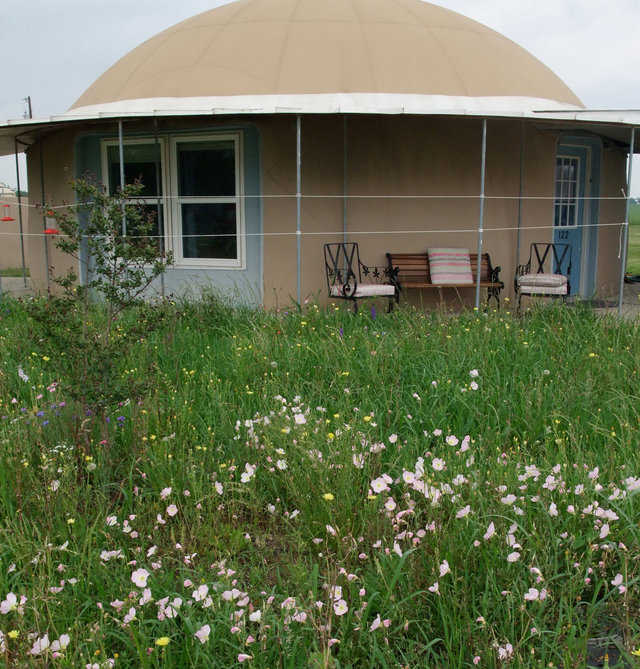
When we partnered with Energy Star I noticed a section called Do-It-Yourself Home Energy Audits. So I thought I would check it out.
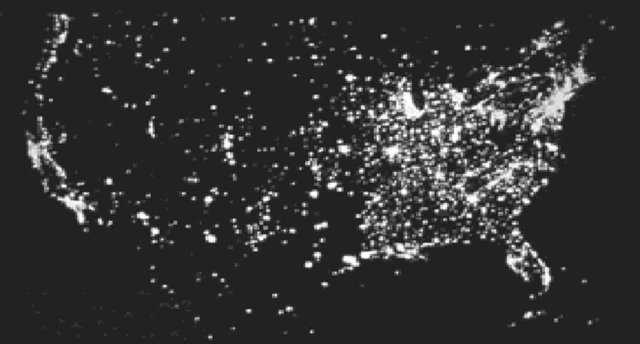
The Monolithic Dome is an idea whose time has come. It is a structure that is extremely energy efficient and sustainable without sacrificing the quality of life that we have come to expect in our homes and buildings.
The Monolithic Dome is a micro-energy user. It needs a minimum of energy to maintain a comfortable interior, usually one fourth of that used by other types of structures. In fact, it takes less energy to heat or cool a Monolithic Dome than it does to heat or cool a super-insulated metal building or a conventional house blanketed in an airtight wrap. Read more about the energy-saving benefits of the Monolithic Dome.

By now, most of us have heard of “green buildings.” Now we’re hearing about “micro-energy buildings,” structures designed to use very little energy. In today’s world we have a tremendous amount of publicity about both. But when we get through all that rhetoric, what are we talking about? We’re talking about buildings that use less energy to construct, maintain and keep warm or cool.
We have had our Monolithic Domes checked by professional engineers to calculate the actual heat loss through the structure. This is done by having a measurement of the amount of heating and/or cooling inputs into the building, matching the inputs with the degree days from local weather conditions, and calculating the R-value that must be in place to make the equation balance. In every case, we got an R-value in excess of 80 and generally over 100.

These pictures are of that dome and another building using a $50,000 Thermograph camera. This camera is designed to take pictures showing the amount of heat in the photo. In a quick look you can see that the heat loss from the Monolithic Dome is virtually zero…

We are often asked, “Why is the Monolithic Dome “Green?” As an answer to this question, we have outlined three of the most salient “green” points: Sustainability, energy efficiency, and use of green materials.